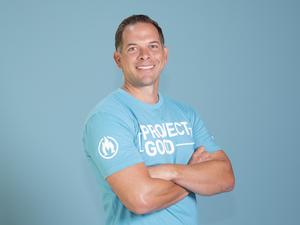When Sam Simmons joined Solo Brands – then Solo Stove – as CFO about seven months ago, he said he saw an IPO in the company’s path in the future. But CEO John Merris thought there was “no point waiting.”
In October, Solo Brands (NYSE: DTC) filed to go public and hit the New York Stock Exchange at the end of the month. The company raised $219 million, giving it a valuation of about $2.14 billion. Simmons said the move will help it continue its growth trajectory.
“Our biggest challenge is getting people aware of us,” Simmons said. “The IPO process is a great avenue for our current customers and future customers to see our brands, get exposure to our brands and products, and refer those brands and products.”
The reason that brand awareness is so important to Solo Brands is because about 40% of the company’s sales are tied to referrals, Simmons said. According to its S-1 filing, Solo Brands saw 92% of sales come from direct-to-consumer channels, with 85% of that coming from its brands’ websites – something the company alludes to in its ticker symbol “DTC.” Simmons said the choice to focus largely on D2C channels is to allow the company to focus on customer satisfaction and responding to the demands of clients.
In the first six months of the year, Solo Stove saw $152 million in sales. When combined with the other businesses that make up Solo Brands – Chubbies Shorts, Oru Kayak and ISLE – the company’s sales totaled $225 million for the first half of 2021.
Simmons said Solo Brands will continue to grow through acquisitions that help boost the company's standing as an outdoor lifestyle brand. He said the company looks for businesses with more than 84% direct-to-consumer sales, high profits and founders that want to continue to grow their brands. He added that with previous acquisitions, the companies’ founders and management teams have all been brought into Solo Brands to continue to lead their respective businesses.
“We really want to be opportunistic,” Simmons said. “This isn't a roll-up strategy. This isn't a strategy where we’re trying to just buy a brand or a company, cut half their employees and squeeze every last dollar. We've been able to partner with great founders that… want to deliver for their customers, enhance their brand and build out their companies.”
Expecting continued growth, especially amid the holiday season, Simmons said Solo Brands has been focusing carrying more inventory. That’s in part a response to Solo Stove running out of inventory during an e-commerce shopping surge in 2020. Next month, the 250-person company is planning to move into a new 430,000 square-foot office, warehouse and fulfillment facility in Grapevine. Simmons added that Solo Brands has gone from using a single manufacturer just a few years ago to having more than 15.
In addition to plans to grow its product lineup, Solo Brands is also looking to expand its geographic presence. This year, the company expanded to Canada and Europe. Simmons said historically only about 3% to 5% of the company’s business has come from international markets through distribution agreements. He added that he thinks Solo Brands has only penetrated about 1% of the addressable U.S. market. Now, the company is looking to do more targeted marketing, while offering lower costs and a more responsive customer experience.
Simmons talked more about the IPO and Solo Brands’ future plans in an interview.
Why did this seem like the right time to go public?
This was viewed as a win for our customers and future customers. The capital allows us to invest in additional innovation. Because we're direct-to-consumer, customers are giving us ideas all the time.
It just makes sense to go public now, get some additional capital, be able to invest in all this organic innovation, all these ideas that we’re getting. Then, obviously, (invest in) acquisitions as well. There are just tremendous brands out there like us, that are growing really well, profitable, direct-to-consumer, largely on their websites, or they have this similar relationship with customer service. One thing I think that's unique about Solo Brands is we take pretty much everything in house to ensure that the customer experiences is perfect.
Why the heavy focus on D2C business?
It's been an effort over time. It a deliberate choice. Our management and founders have always had this mindset of customer first and wanting to own and control that brand experience, and really have this long-term mindset where we want the relationship. We want to have the customer's email address and social accounts to be able to interact with them over time, so that we can figure out what's working well and what isn't working.
If you go through a retailer it's harder to do that. You don't get that information up front, you don't get that contact up front. So, it was a deliberate choice from the beginning to stay direct-to-consumer and drive that consumer model. Especially these days, customers are more and more comfortable purchasing higher-cost items online if you have a really strong brand. That removes that risk factor as well. If something happens, you can return it and we will take care of you. That's been a mindset shift too, especially with COVID, people got comfortable with the idea that I can order this online and avoid the hassle of having to go to a store and I can have good experience.
How has Solo Brands been affected by recent supply chain issues?
We're in great shape on a supply chain basis. We added a number of manufacturers. The other nice thing is because we do real-time orders, we can communicate directly back to manufacturers much faster than if you're primarily only through retail, so we're getting that real-time update. We made a real effort early in the year to build up inventory and turn it up on the manufacturing. We are carrying significantly more inventory than we have in the past, specifically to queue up for the seasons ahead, so that we can deliver that good experience to customers.
This interview has been edited for brevity and clarity.





